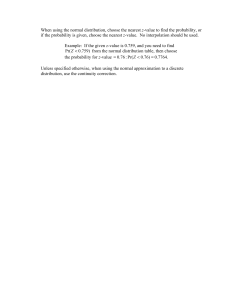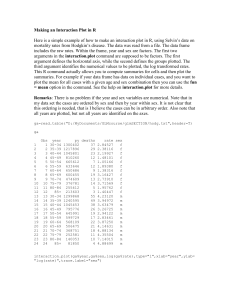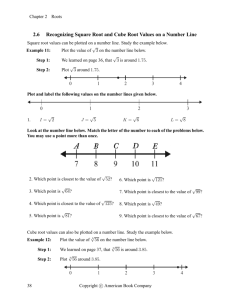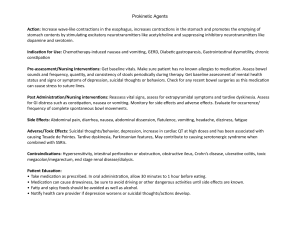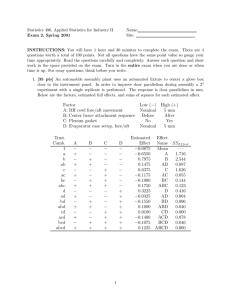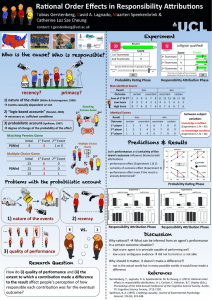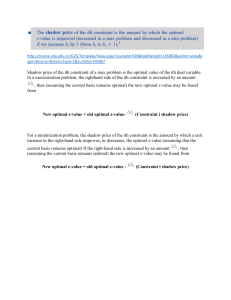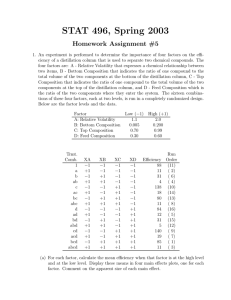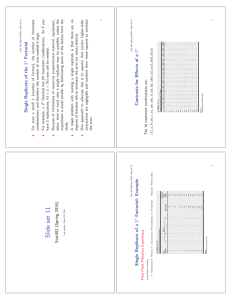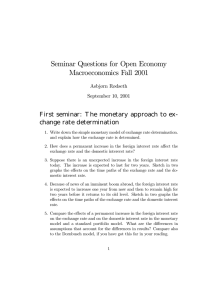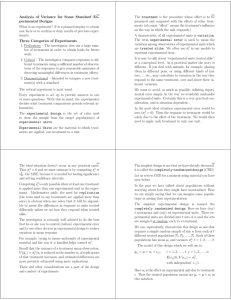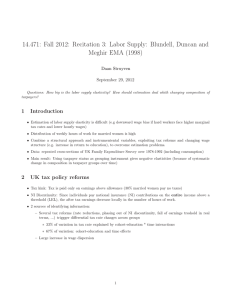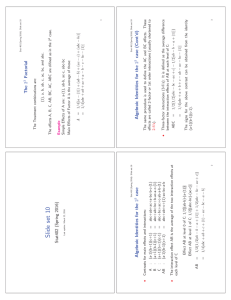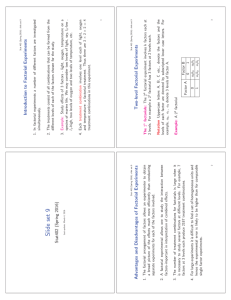Steps for constructing a Normal Probability Plot
advertisement
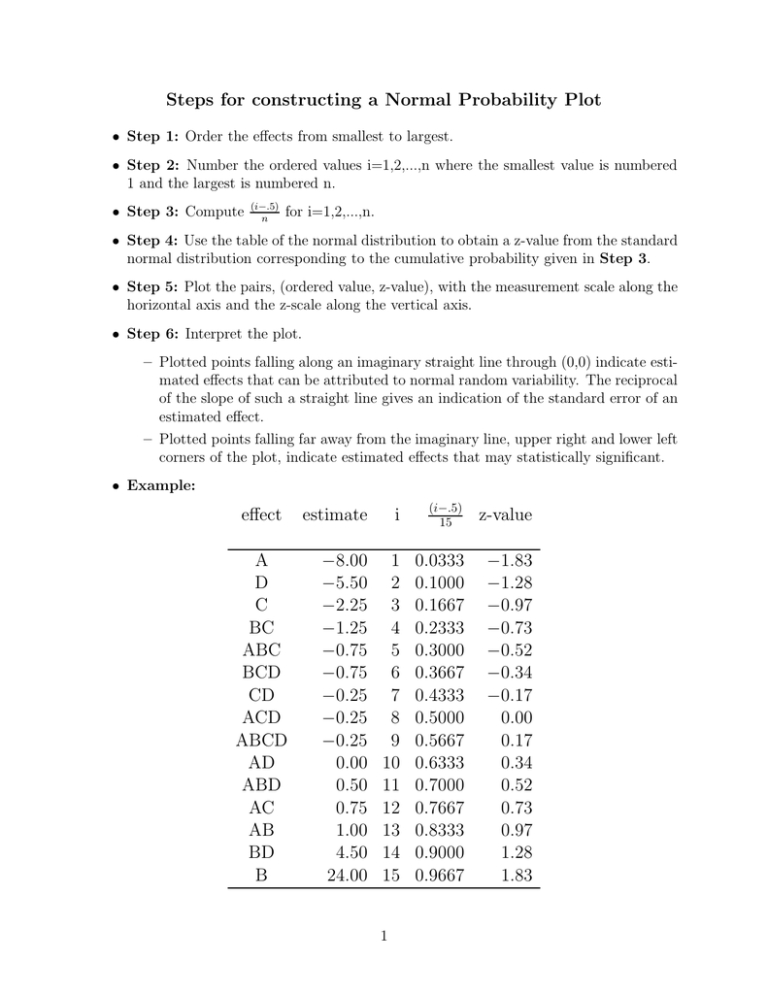
Steps for constructing a Normal Probability Plot • Step 1: Order the effects from smallest to largest. • Step 2: Number the ordered values i=1,2,...,n where the smallest value is numbered 1 and the largest is numbered n. • Step 3: Compute (i−.5) n for i=1,2,...,n. • Step 4: Use the table of the normal distribution to obtain a z-value from the standard normal distribution corresponding to the cumulative probability given in Step 3. • Step 5: Plot the pairs, (ordered value, z-value), with the measurement scale along the horizontal axis and the z-scale along the vertical axis. • Step 6: Interpret the plot. – Plotted points falling along an imaginary straight line through (0,0) indicate estimated effects that can be attributed to normal random variability. The reciprocal of the slope of such a straight line gives an indication of the standard error of an estimated effect. – Plotted points falling far away from the imaginary line, upper right and lower left corners of the plot, indicate estimated effects that may statistically significant. • Example: effect A D C BC ABC BCD CD ACD ABCD AD ABD AC AB BD B estimate i (i−.5) 15 z-value −8.00 −5.50 −2.25 −1.25 −0.75 −0.75 −0.25 −0.25 −0.25 0.00 0.50 0.75 1.00 4.50 24.00 1 2 3 4 5 6 7 8 9 10 11 12 13 14 15 0.0333 0.1000 0.1667 0.2333 0.3000 0.3667 0.4333 0.5000 0.5667 0.6333 0.7000 0.7667 0.8333 0.9000 0.9667 −1.83 −1.28 −0.97 −0.73 −0.52 −0.34 −0.17 0.00 0.17 0.34 0.52 0.73 0.97 1.28 1.83 1

